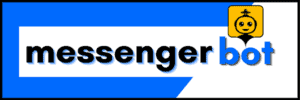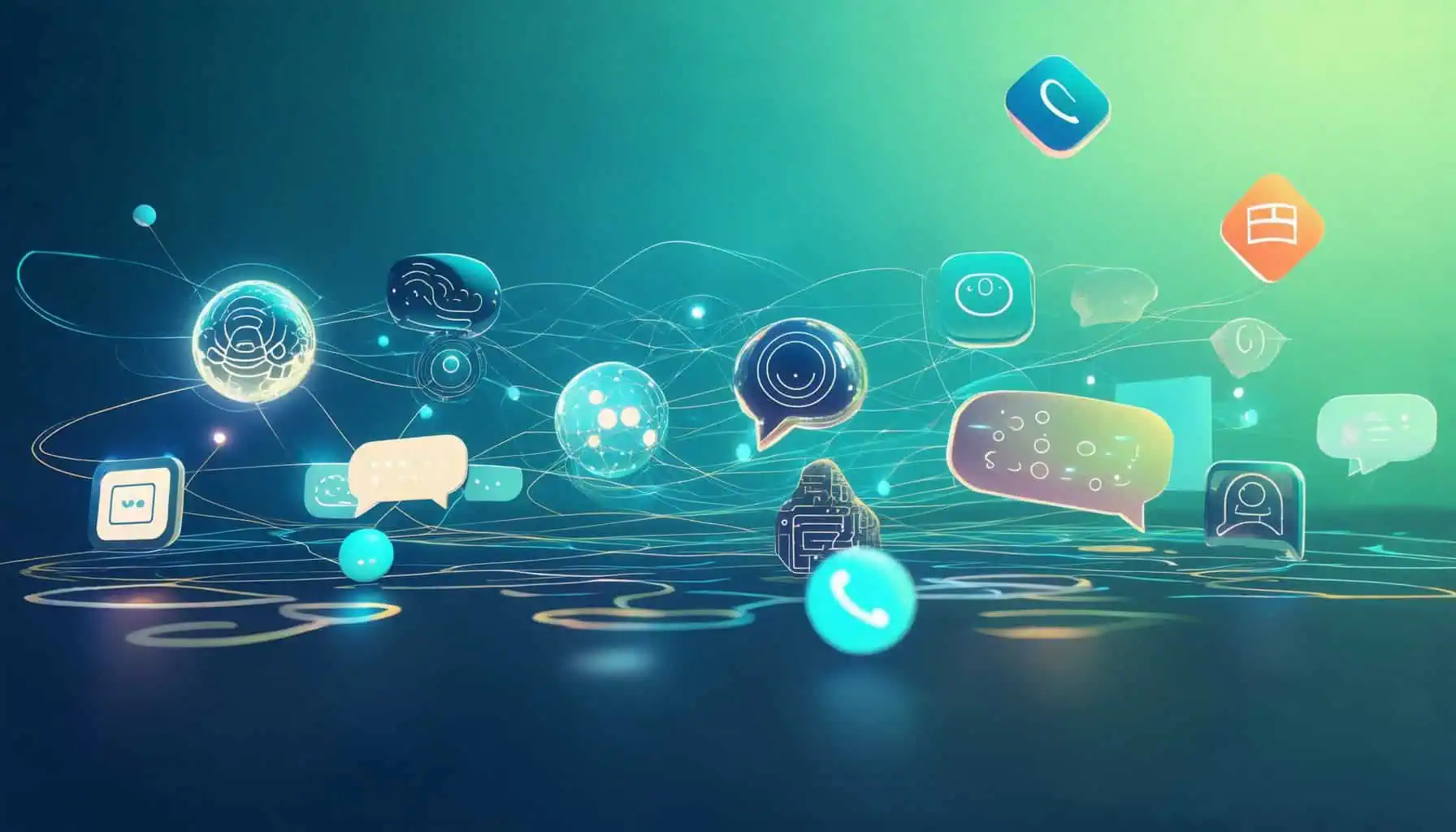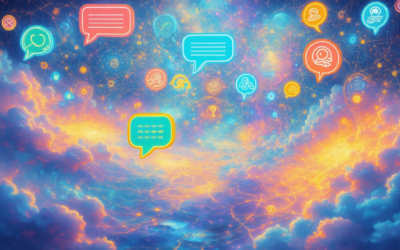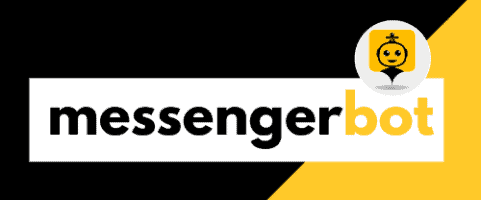Mga Pangunahing Kahalagahan
- Essential Role of Basic Chatbots: Basic chatbots enhance customer engagement and streamline communication by providing instant responses and task automation.
- Mga Uri ng Chatbot: Understand the four main types—Menu-Based, Rule-Based, AI-Powered, and Voice Chatbots—to choose the right fit for your business needs.
- Makatwirang Solusyon: Simple chatbots can be developed for as low as $50/month, with free options available for basic functionalities, making them accessible for all businesses.
- Easy Creation Techniques: Platforms like Dialogflow and Chatfuel allow you to create chatbots without coding, making it easy for beginners to enhance digital interactions.
- Data-Driven Insights: Chatbots collect valuable user data that can refine marketing strategies and improve customer service, driving better business decisions.
In today’s digital landscape, basic chatbots have emerged as essential tools for enhancing communication and customer engagement. This article delves into the world of basic chatbots, providing a comprehensive understanding of their definition, significance, and the various types available. We will explore the four main types of chatbots, their unique use cases, and guide you through the process of creating a simple chatbot, including a beginner-friendly approach using Python. Additionally, we will break down the costs associated with developing a simple chatbot and discuss whether popular voice assistants like Alexa can be classified as chatbots. For those interested in creating their own chatbot for free, we will highlight platforms and resources that can help you get started. Join us as we uncover the valuable insights and practical techniques that will empower you to navigate the exciting realm of basic chatbots.
What is a basic chatbot?
A basic chatbot is an artificial intelligence (AI) application designed to simulate human conversation through text or voice interactions. These chatbots utilize natural language processing (NLP) and machine learning algorithms to understand user queries and provide relevant responses.
Definition and Overview of Basic Chatbots
Key features of basic chatbots include:
- 24/7 na Availability: Chatbots can operate around the clock, offering immediate assistance to users without the need for human intervention. This ensures that customer inquiries are addressed promptly, enhancing user satisfaction.
- Awtomasyon ng Gawain: By handling repetitive tasks such as answering frequently asked questions or processing simple transactions, chatbots free up human agents to focus on more complex issues, thereby increasing overall efficiency in customer service.
- Pakikipag-ugnayan ng Gumagamit: Basic chatbots can engage users through personalized interactions, guiding them through processes such as product selection or troubleshooting, which can improve the overall customer experience.
- Integrasyon sa mga Messaging Platforms: Many basic chatbots can be integrated into popular messaging platforms, such as Facebook Messenger, allowing businesses to reach customers where they already communicate. This integration enhances accessibility and user convenience.
- Pagkolekta at Pagsusuri ng Data: Chatbots can gather valuable data from user interactions, providing insights into customer preferences and behaviors. This information can be used to refine marketing strategies and improve service offerings.
According to a report by Gartner, by 2025, 75% of customer service interactions will be powered by AI, including chatbots, highlighting their growing importance in the digital landscape. In summary, basic chatbots serve as essential tools for businesses looking to enhance customer service efficiency, improve user engagement, and leverage data for better decision-making.
Importance of Basic Chatbots in Modern Communication
In today’s fast-paced digital environment, the importance of basic chatbots cannot be overstated. They play a crucial role in streamlining communication between businesses and customers. By providing instant responses and automating routine inquiries, chatbots significantly enhance user experience and satisfaction.
Moreover, the integration of chatbots into various messaging platforms allows businesses to maintain a constant presence in the digital space. This accessibility not only improves customer engagement but also fosters loyalty, as users appreciate the convenience of immediate assistance.
As companies increasingly adopt AI technologies, the reliance on basic chatbots is expected to grow. Their ability to analyze user data and adapt interactions accordingly makes them invaluable for tailoring marketing strategies and improving service delivery. For businesses looking to stay competitive, leveraging basic chatbots is essential.
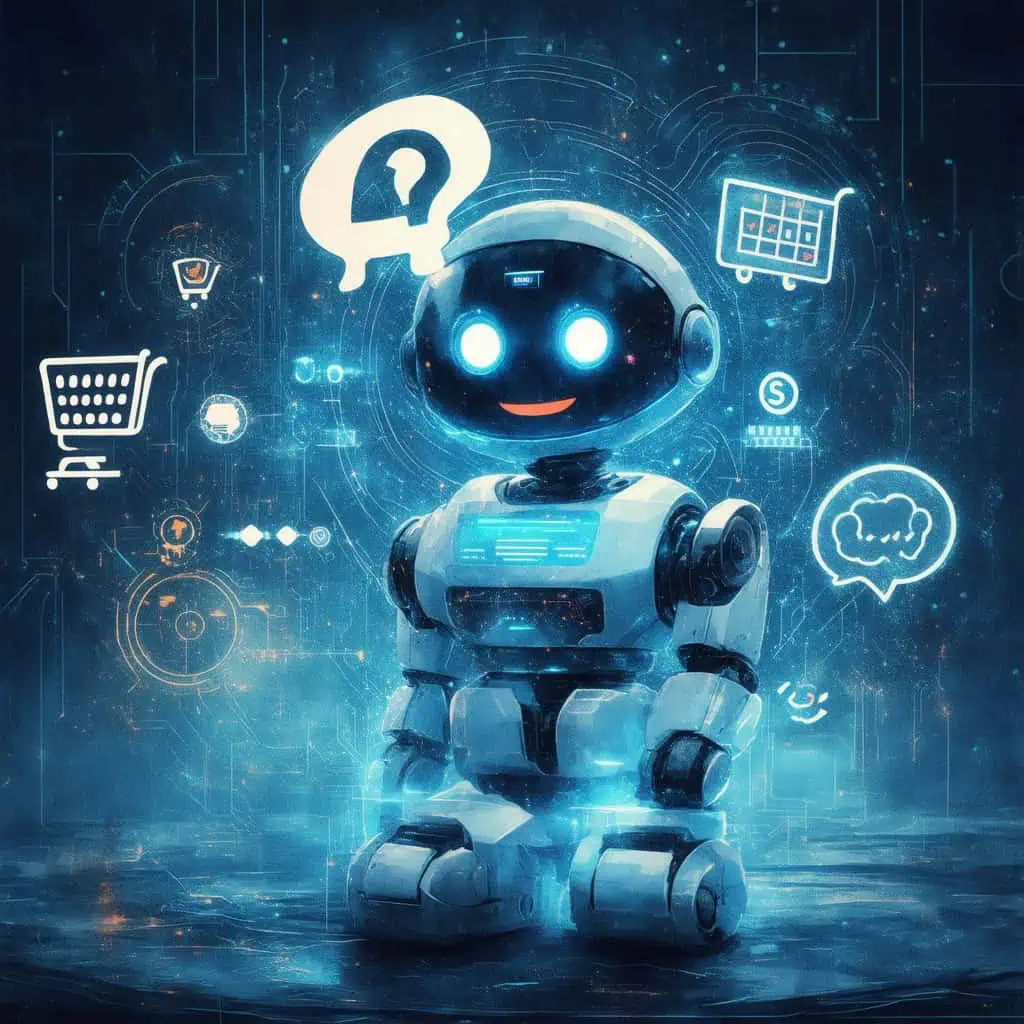
Ano ang 4 na uri ng mga chatbot?
Understanding the different types of chatbots is essential for businesses looking to enhance their customer interactions. Here are the four main types of chatbots:
Exploring the Four Main Types of Chatbots
- Menu or Button-Based Chatbots: These are the simplest form of chatbots that guide users through a predefined set of options. Users interact by selecting buttons or menu items, making it easy for businesses to streamline customer inquiries and provide quick responses.
- Rule-Based Chatbots: These chatbots operate on a set of predefined rules and scripts. They can handle specific queries by following a decision tree, but their capabilities are limited to the scenarios they are programmed for. This type is effective for straightforward tasks but lacks the flexibility of more advanced chatbots.
- AI-Powered Chatbots: Utilizing natural language processing (NLP) and machine learning, AI-powered chatbots can understand and respond to user queries in a more conversational manner. They learn from interactions, improving their responses over time. These chatbots are increasingly popular for customer service and engagement due to their ability to handle complex inquiries.
- Voice Chatbots: These chatbots use voice recognition technology to interact with users through spoken language. They are commonly found in virtual assistants like Amazon’s Alexa or Google Assistant, allowing users to perform tasks hands-free. Voice chatbots are gaining traction as voice search becomes more prevalent.
Use Cases for Each Type of Chatbot
Bawat uri ng chatbot ay may kanya-kanyang layunin at maaaring gamitin sa iba't ibang sitwasyon:
- Menu or Button-Based Chatbots: Angkop para sa mga FAQ at pangunahing suporta sa customer, ang mga chatbot na ito ay maaaring mahusay na magturo sa mga gumagamit patungo sa impormasyong kailangan nila nang hindi kinakailangan ng kumplikadong interaksyon.
- Rule-Based Chatbots: Pinakamainam para sa mga industriya na may paulit-ulit na mga tanong, tulad ng banking o retail, kung saan ang tiyak na impormasyon ay kinakailangan nang tuloy-tuloy.
- AI-Powered Chatbots: Perpekto para sa mga aplikasyon ng serbisyo sa customer, ang mga chatbot na ito ay maaaring hawakan ang mga masalimuot na pag-uusap, na ginagawang mahalaga sila para sa mga negosyo na nagbibigay-priyoridad sa pakikipag-ugnayan sa customer.
- Voice Chatbots: Palaging ginagamit sa mga smart home device at mobile application, pinahusay ng mga voice chatbot ang karanasan ng gumagamit sa pamamagitan ng pagpapahintulot ng hands-free na operasyon at accessibility.
Para sa karagdagang impormasyon tungkol sa mga kakayahan ng chatbot at kanilang mga aplikasyon, tingnan ang Iba't ibang kaso ng paggamit ng chatbot.
Paano Gumawa ng Simpleng Chatbot?
Ang paglikha ng isang simpleng chatbot ay maaaring lubos na mapabuti ang interaksyon ng gumagamit at pasimplehin ang komunikasyon para sa mga negosyo. Sa pamamagitan ng pagsunod sa isang nakabalangkas na diskarte, maaari kang bumuo ng chatbot na tumutugon sa iyong mga tiyak na pangangailangan at epektibong nakikipag-ugnayan sa mga gumagamit. Narito ang isang sunud-sunod na gabay kung paano gumawa ng simpleng chatbot:
- Pumili ng Platform: Pumili ng isang platform para sa pagbuo ng chatbot na akma sa iyong mga pangangailangan, tulad ng Dialogflow, Chatfuel, o ManyChat. Ang mga platform na ito ay nag-aalok ng mga user-friendly na interface at iba't ibang tampok.
- Tukuyin ang Layunin: Malinaw na ilarawan kung ano ang nais mong makamit ng iyong chatbot. Maaaring kabilang dito ang pagsagot sa mga FAQ, pagbibigay ng suporta sa customer, o paggabay sa mga gumagamit sa isang proseso.
- Disenyo ng Daloy ng Usapan: I-map ang mga landas ng pag-uusap na tatahakin ng iyong chatbot. Gumamit ng mga flowchart upang mailarawan ang mga interaksyon at matiyak ang maayos na karanasan ng gumagamit.
- Lumikha ng Bot:
- I-set Up ang Iyong Chatbot: Gamitin ang URL ng iyong website upang isama ang chatbot sa iyong site.
- Sanayin ang Iyong Chatbot: I-input ang mga karaniwang tanong at sagot upang matulungan ang bot na maunawaan ang mga tanong ng gumagamit.
- I-tune ang Iyong Chatbot: Ayusin ang mga sagot ng bot batay sa mga interaksyon ng gumagamit upang mapabuti ang katumpakan.
- Tool sa Pagsubok: Gamitin ang mga built-in na tool sa pagsubok na ibinibigay ng napiling platform upang gayahin ang mga pag-uusap at tukuyin ang mga lugar para sa pagpapabuti.
- Lumikha at I-configure ang Iyong Chat Widget: I-customize ang hitsura ng iyong chat widget upang tumugma sa branding ng iyong website. Kabilang dito ang mga kulay, font, at pagkakalagay sa pahina.
- Mag-set Up ng mga Bati: Mag-program ng mga personalized na pagbati upang makuha ang atensyon ng mga gumagamit kapag sila ay unang nakikipag-ugnayan sa chatbot.
- I-preview ang Chat Widget: Bago ilunsad, i-preview ang chat widget upang matiyak na ito ay gumagana nang tama at nagbibigay ng positibong karanasan sa gumagamit.
- Ilunsad at Subaybayan: Kapag nasiyahan na sa setup, ilunsad ang iyong chatbot. Patuloy na subaybayan ang pagganap nito at mangolekta ng feedback mula sa mga gumagamit upang gumawa ng kinakailangang mga pagsasaayos.
Para sa karagdagang impormasyon, isaalang-alang ang pag-explore ng mga mapagkukunan mula sa mga kagalang-galang na pinagkukunan tulad ng AI Chatbot ng IBM at mga blog sa industriya na nagbibigay ng mahalagang impormasyon tungkol sa disenyo ng chatbot at mga estratehiya sa pakikipag-ugnayan ng gumagamit.
Paano Gumawa ng Chatbot sa Python: Isang Panimula para sa mga Nagsisimula
Kung interesado kang i-program ang iyong sariling chatbot, ang Python ay isang mahusay na wika upang simulan dahil sa pagiging simple nito at makapangyarihang mga library. Narito ang isang madaling sundan na diskarte sa paglikha ng chatbot sa Python:
- I-set Up ang Iyong Kapaligiran: I-install ang Python at mag-set up ng isang development environment. Maaari mong gamitin ang mga IDE tulad ng PyCharm o Jupyter Notebook para sa kadalian ng paggamit.
- I-install ang mga Kinakailangang Library: Gumamit ng mga library tulad ng NLTK para sa natural language processing at ChatterBot para sa paggawa ng mga conversational bot.
- Tukuyin ang Layunin ng Iyong Bot: Katulad ng ibang mga platform, tukuyin kung ano ang gagawin ng iyong bot. Sasagot ba ito sa mga tanong, magbibigay ng rekomendasyon, o tutulong sa mga gawain?
- Bumuo ng Bot Logic: Isulat ang code upang hawakan ang mga input ng gumagamit at bumuo ng mga tugon. Gumamit ng mga kondisyonal na pahayag upang lumikha ng mga daloy ng pag-uusap.
- Sanayin ang Iyong Bot: Mag-input ng mga sample na pag-uusap upang matulungan ang iyong bot na matutong tumugon nang naaangkop sa mga query ng gumagamit.
- Subukan ang Iyong Bot: Magpatakbo ng mga pagsusuri upang matiyak na tama ang tugon ng iyong bot at pinuhin ang lohika nito batay sa feedback.
- I-deploy ang Iyong Bot: Kapag nasiyahan ka na, ilunsad ang iyong chatbot sa isang platform tulad ng Flask o Django upang maging accessible ito online.
Para sa mas detalyadong mga tutorial sa pagbuo ng chatbot, tingnan ang Mga Tutorial sa Messenger Bot para sa komprehensibong mga gabay at mapagkukunan.
Magkano ang halaga ng isang simpleng chatbot?
Ang halaga ng isang simpleng chatbot ay maaaring mag-iba nang malaki batay sa ilang mga salik, kabilang ang pagiging kumplikado ng bot, ang ginamit na platform, at ang mga kinakailangang tampok. Mahalaga ang pag-unawa sa mga gastos na ito para sa mga negosyo na nagnanais na mapabuti ang kanilang digital na komunikasyon sa pamamagitan ng automation.
Paghahati-hati ng Mga Gastos na Kaugnay ng Simpleng Chatbots
Narito ang isang paghahati-hati ng mga karaniwang estruktura ng presyo para sa simpleng chatbots:
- Mga Pangunahing Chatbot: Maaari kang magsimula sa isang batayang chatbot sa halagang $50 hanggang $60 bawat buwan. Karaniwan, ang presyong ito ay sumasaklaw sa isang solong bot na may limitadong mga kakayahan.
- Maramihang Bots: Kung kailangan mong mag-deploy ng maraming chatbot sa iba't ibang domain o platform, maaaring lumampas ang mga gastos sa $100 bawat buwan. Ito ay totoo lalo na para sa mga negosyo na nagnanais na mapabuti ang pakikipag-ugnayan ng customer sa iba't ibang channel.
- Mga Advanced na Tampok: Para sa mga chatbot na nangangailangan ng mga advanced na tampok tulad ng natural language processing (NLP), kakayahan sa machine learning, o integrasyon sa mga sistema ng customer relationship management (CRM), maaaring tumaas nang malaki ang mga presyo. Ang mga enterprise plan ay kadalasang nagsisimula sa ilang daang dolyar bawat buwan, na nag-aalok ng pagpapasadya, pinahusay na seguridad, at nakalaang suporta.
- Mga Libreng Opsyon: Ang ilang mga platform ay nag-aalok ng mga libreng bersyon na may mga batayang kakayahan, na maaaring maging magandang panimula para sa maliliit na negosyo o indibidwal na sumusubok.
- Messenger Bots: Kung isinasaalang-alang mong isama ang isang Messenger Bot, maraming platform ang nagbibigay ng mga tiyak na modelo ng pagpepresyo para sa mga bot na dinisenyo para sa mga interaksyon sa social media. Ang mga ito ay maaaring mula sa libre hanggang sa premium na mga plano depende sa mga tampok at antas ng pakikipag-ugnayan ng gumagamit.
Mga Salik na Nakakaapekto sa Gastos ng Pagbuo ng Chatbot
Maraming salik ang maaaring makaapekto sa kabuuang gastos ng pagbuo ng isang simpleng chatbot:
- Kumplikado: Mas kumplikado ang mga kakayahan ng chatbot, mas mataas ang gastos. Ang mga batayang bot na may simpleng script ay mas mura kaysa sa mga nangangailangan ng advanced na kakayahan ng AI.
- Platform: Iba't ibang platform ang may iba't ibang estruktura ng pagpepresyo. Halimbawa, ang pag-integrate ng isang Messenger Bot ay maaaring may ibang gastos kumpara sa isang web-based na chatbot.
- Pag-customize: Ang mga custom-built na chatbot na naangkop sa mga tiyak na pangangailangan ng negosyo ay maaaring magpataas ng mga gastos kumpara sa mga off-the-shelf na solusyon.
- Pagpapanatili at Suporta: Ang patuloy na pagpapanatili at suporta sa customer ay maaaring magdagdag sa kabuuang gastos, lalo na para sa mga negosyo na nangangailangan ng tuloy-tuloy na mga update at pagpapabuti.
Para sa komprehensibong pag-unawa sa pagpepresyo ng chatbot, mahalagang suriin ang iyong mga tiyak na pangangailangan at ang potensyal na pagbabalik sa pamumuhunan. Laging isaalang-alang ang scalability at adaptability ng solusyon ng chatbot na pipiliin mo upang matiyak na ito ay nakakatugon sa mga hinaharap na pangangailangan. Para sa higit pang mga pananaw sa paglikha ng iyong sariling chatbot, tingnan ang gabaying ito.

Si Alexa ba ay isang Chatbot?
Si Alexa ay isang voice-activated na chatbot na gumagamit ng advanced na artificial intelligence (AI) at natural language processing (NLP) upang makipag-ugnayan sa mga gumagamit. Ang makabagong teknolohiyang ito ay nagpapahintulot kay Alexa na makipag-usap, sumagot sa mga tanong, at magsagawa ng mga gawain batay sa mga utos ng boses, na nagbibigay ng mas natural na interaksyon kumpara sa mga tradisyonal na chatbot.
Pag-unawa sa Kakayahan ni Alexa bilang isang Chatbot
Ang mga kakayahan ni Alexa ay umaabot sa higit pa sa simpleng pagkilala sa boses. Gumagamit ito ng mga sopistikadong NLP algorithm upang maunawaan at bigyang-kahulugan ang mga utos ng boses, na nagpapahintulot dito na maunawaan ang konteksto, mga nuansa, at intensyon ng gumagamit. Ito ay nagreresulta sa mas tumpak na mga tugon, na ginagawang praktikal na katulong si Alexa para sa iba't ibang gawain, kabilang ang pagkontrol sa mga smart home device, pag-play ng musika, at pag-set ng mga alarma.
Higit pa rito, si Alexa ay umunlad upang isama ang mga text-based na interaksyon, na nagpapahintulot sa mga gumagamit na i-type ang kanilang mga query. Ang kakayahang ito ay nagpapalawak ng kanyang functionality bilang isang chatbot, na nag-uugnay sa pagitan ng boses at text na komunikasyon. Mula noong Disyembre 2020, opisyal na nagsimula si Alexa na gumana bilang isang chatbot sa pagpapakilala ng mga typing features sa mga iOS device, na sumasalamin sa lumalaking trend ng pag-integrate ng voice at text-based na AI interactions.
Comparison of Alexa with Other Basic Chatbots
When comparing Alexa to other basic chatbots, its voice-activated nature sets it apart. Unlike traditional chatbots that rely solely on text input, Alexa combines the efficiency of voice recognition with the convenience of text. This unique positioning allows it to offer a richer user experience, similar to platforms like Messenger Bot, which also facilitates conversational interactions.
For further insights into the advancements in conversational AI and the functionalities of voice assistants, authoritative sources such as Voicebot.ai at AWS provide valuable information.
Is Chatbot Free?
Exploring Free Options for Basic Chatbots
Free chatbots are widely available across various platforms, providing users with basic functionalities at no cost. However, these free options often come with limitations in features and capabilities compared to their paid counterparts. For instance, many free chatbots, such as those offered by Tidio at WotNot, allow businesses to implement simple customer support solutions without any financial investment.
While free chatbots can effectively handle straightforward tasks like answering FAQs or basic lead qualification, they typically lack advanced AI capabilities. This limitation can hinder their effectiveness for businesses with more complex needs, as noted by sources like Denser.ai. For businesses looking to scale their operations, investing in a paid chatbot solution may be necessary to access advanced features and integrations.
Basic Chatbot Free Resources and Tools Available
There are several resources and tools available for creating free chatbots. Platforms like HubSpot offer free chatbot builders that allow users to create bots without any coding knowledge. These tools often provide a user-friendly interface, making it easy for businesses to set up their chatbots quickly.
For those interested in more comprehensive solutions, exploring platforms like Messenger Bot can be beneficial. This platform offers a range of features that can enhance digital communication, including automated responses and workflow automation, even in its free offerings. However, businesses should assess their specific needs and consider whether a free chatbot will suffice or if a paid option would better serve their operational goals.
Create your own chatbot free
Creating your own chatbot for free is an exciting opportunity to enhance user engagement and streamline communication. With various platforms available, you can easily design a basic chatbot tailored to your needs without incurring costs. Below, we explore some of the best platforms and resources to help you get started.
Platforms to Create Your Own Chatbot Free
Several platforms allow you to create your own chatbot without any financial investment. Here are some of the most popular options:
- Messenger Bot: This platform offers a user-friendly interface to create chatbots for social media and websites. With its automated responses and workflow automation features, you can engage users effectively. Explore more about mga tampok ng Messenger Bot.
- Dialogflow: Developed by Google, Dialogflow provides a robust framework for building conversational interfaces. It supports natural language processing, making it easier to create intuitive chatbots. Learn more about Dialogflow.
- Chatfuel: Ideal for Facebook Messenger bots, Chatfuel allows you to build chatbots without coding. Its drag-and-drop interface simplifies the process, making it accessible for beginners.
- ManyChat: This platform focuses on marketing automation through chatbots. It offers a free tier that allows you to create basic bots for Facebook Messenger and SMS.
Basic Chatbot GitHub Projects for Beginners
If you are interested in a more hands-on approach, exploring GitHub projects can be a great way to learn. Here are some beginner-friendly GitHub repositories that focus on basic chatbot development:
- Python Chatbot: This repository provides a simple Python-based chatbot that utilizes natural language processing. It’s an excellent starting point for those looking to understand the fundamentals of chatbot development.
- Node.js Chatbot: For those familiar with JavaScript, this Node.js chatbot project demonstrates how to create a basic chatbot using popular libraries.
- Rasa: Rasa is an open-source framework for building conversational AI. The GitHub repository includes tutorials and examples to help you get started with creating your own chatbot.
By leveraging these platforms and resources, you can create a basic chatbot for free, enhancing your digital communication capabilities. For a comprehensive guide on building and customizing your AI bot, check out mapagkukunang ito.
